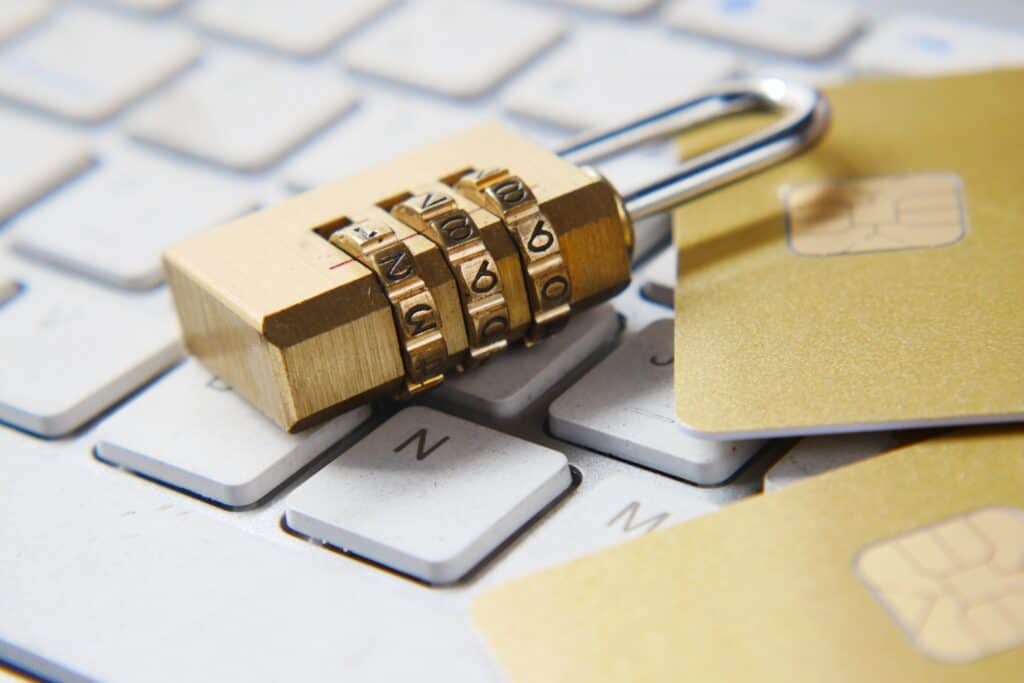- Multi-factor authentication (MFA) adds extra layers of security to protect businesses from cyberthreats like phishing and data breaches by requiring users to verify their identity through multiple methods, such as passwords, biometrics, or physical tokens.
- MFA helps protect against phishing attacks, prevent costly data breaches, meet compliance requirements, and boost employee accountability by tracking access to critical systems.
- Businesses should assess current security setups, choose an appropriate MFA solution, implement MFA in phases, provide employee training, and monitor its effectiveness for strong security.
As businesses grow more dependent on digital platforms, cybersecurity becomes a top priority. With increasing cyberthreats such as phishing, data breaches, and hacking attempts, one thing is clear: passwords alone are no longer enough to protect sensitive information. This is where Multi-factor authentication (MFA) can be a great fit for your business, no matter its size.
What Is Multi-Factor Authentication (MFA)?
Multi-factor authentication (MFA) is a security process where users must verify their identity through multiple methods before gaining access to systems, accounts, or sensitive data. The idea is to combine two or more authentication factors:
- Something you know, such as a password or PIN.
- Something you have, like a phone, smart card, or physical security key.
- Something you are, which encompasses biometrics like fingerprints or facial recognition.
The goal of MFA is to make sure that even if one factor (like a password) is compromised, the additional layers prevent unauthorized access.
Why Your Business Needs MFA
There are many threats facing business data, and cybercriminals are becoming increasingly sophisticated. As such, your business should use MFA for the following reasons:
Protect Against Phishing Attacks
Phishing attacks target employees by tricking them into revealing sensitive information like passwords. If an employee falls victim, hackers can gain access to critical systems. However, with MFA in place, a password alone won’t be enough to breach your defenses. The hacker would also need access to the second factor, which makes it far less likely that they’ll succeed.
Prevent Data Breaches
Data breaches are costly—not just financially but also in terms of your business’s reputation. Finding out a business was subject to a data breach in the past makes many customers weary of interacting with them in the future. By using MFA, you significantly reduce the risk of breaches, as unauthorized users won’t be able to access your systems with just a stolen password. Even if a hacker gets hold of credentials through social engineering or brute force attacks, they’ll still face additional authentication hurdles.
Meet Compliance Requirements
Many industries have compliance regulations that require certain levels of data protection. Implementing MFA can help your business meet these regulations so you avoid fines and keep your operations within legal bounds. Whether it’s GDPR, HIPAA, or another data protection law, MFA strengthens your security posture, which is often a requirement for compliance.
Boost Employee Accountability
MFA adds a layer of personal responsibility for employees. By requiring them to verify their identity with a second factor, it reduces the likelihood of accidental access or data mishandling. It also provides an audit trail, meaning you can track when and how access was granted, further enhancing accountability.
Steps to Implement MFA in Your Business
While the benefits of MFA are clear, you might not know how to start implementing it into your business model. Luckily, the process is more straightforward than you might think! Follow these steps to incorporate MFA into your business seamlessly:
1. Evaluate Your Current Security Setup
Before you jump into MFA implementation, assess your existing security measures. Determine which systems and applications require the highest level of protection and which users will need MFA the most. Start with sensitive systems like financial software, email servers, and customer databases, and then expand to less critical systems.
2. Choose the Right MFA Solution
There are many MFA solutions on the market, each with its strengths. Some common types of MFA include the following:
- Text Message or Email Verification: After entering a password, users receive a one-time code sent to their phone or email, which they need to input to gain access.
- App-Based Authentication: Tools like Google Authenticator or Microsoft Authenticator generate one-time codes on a user’s smartphone that expire after a short time.
- Biometric Authentication: This involves fingerprint scans, retina scans, or facial recognition to confirm a user’s identity.
- Hardware Tokens: Devices such as YubiKey require the user to insert a physical key into their device to authenticate.
3. Roll Out MFA in Phases
To avoid overwhelming your employees and IT team, introduce MFA in phases. Start with high-risk users or departments that deal with sensitive information, like the finance or IT teams. Then, gradually expand MFA to the rest of the company.
It’s also helpful to begin with applications that are most critical to business operations, like email, cloud storage, or CRM software. Once MFA is successfully implemented in these systems, move on to others.
4. Educate Your Employees
Introducing MFA will require a change in routine for employees, so it’s necessary to provide proper training. Make sure they understand why MFA is important, how to use it, and the benefits it provides. Offer clear, step-by-step instructions for setting up their second authentication factor, whether it’s an app, text message, or hardware token.
Additionally, address any concerns or technical challenges they may face and provide IT support for a smooth transition.
5. Monitor and Adjust
Once MFA is implemented, regularly monitor its effectiveness. Take the time to track failed login attempts and look for any suspicious activity that could indicate an attempted breach. Also, keep an eye on employee feedback to address any usability issues.
Don’t be afraid to make adjustments if necessary. You might find that one form of MFA (like text messages) isn’t as secure as you’d hoped, and you may want to switch to an app-based or biometric system for stronger security.
Overcoming Common MFA Implementation Challenges
While MFA is a thorough security measure, businesses often face a few hurdles during implementation. Let’s take a look at some common challenges and how to overcome them:
- Employee Pushback: Some employees may resist MFA because they see it as an inconvenience. The best way to tackle this is through education. Highlight the importance of MFA in protecting the company, its data, and its own personal information.
- Cost Concerns: Some businesses, especially small ones, worry about the cost of implementing MFA. While there are expenses involved in setting up MFA (especially if you choose hardware tokens), many affordable options are available. App-based authentication is cost-effective and often free to implement, making it a popular choice for smaller businesses.
- Compatibility Issues: Depending on your company’s software and systems, you may encounter compatibility issues when trying to implement MFA. To avoid this, choose an MFA provider that integrates seamlessly with the software you already use.
Ready to keep your business—and its data—secure? Our team at CMIT North Oakland & Walnut Creek can help! Contact us today for all your IT and cybersecurity solutions.





